Fruits that are not round are fruits that come in other shapes rather than a round or spherical form. Popular fruit categories include elongated, oval, cylindrical, teardrop, and irregular shapes.
The affinity of fruits for round shapes results from evolutionary advantages since these shapes facilitate better growth, nutrient distribution, and seed dispersal (round fruits roll farther away when fallen). But many fruits defy this rule, and I will show them to you.
From tropical fruits to temperate produce, I will introduce you to the most well-known 26 non-round fruits in nature. Many of them are household names, while a few others are exotic delights limited to certain regions.
Nevertheless, my suggested fruits all showcase the diversity of natural offerings. Are you ready to discover these wonderful options?
26 Interesting Fruits That Are Not Round With Filter
There are 26 interesting non-round fruits that are worth learning about. Toward the end of this list, which is arranged by popularity, you will find some quite unusual fruits.
Utilize my interactive filters if you wish for a more educational reading experience. There are options for national fruits, exotic fruits, fruits consumed as vegetables, fruits for cooking, fruits for making beverages, and fruits for garnishing foods and drinks.
Banana
- Central African Republic
- Cyprus
- Egypt
- For Beverages
- For Dishes
- National
Banana is an elongated, curved fruit with a soft, starchy interior. Its color ranges from green when unripe to different shades of yellow or red.
This tropical fruit originated in Southeast Asia, and its cultivation has gone on for thousands of years. Ripe bananas are very sweet, while unripe ones are hard and astringent.
Bananas are available year-round, so you can easily grab a bunch to eat fresh or prepare smoothies and fruit salads. Fresh bananas with whole grains, yogurts, or seeds make a simple yet healthy breakfast.
Strawberry
- Denmark
- For Beverages
- For Dishes
- For Garnish
- National
Strawberry is a red heart-shaped fruit that boasts a bright red color and is crowned with a green leafy cap. Its exterior is adorned with hundreds of tiny, edible seeds.
Astonishingly, those seeds you see on the exterior are actually fruits, whereas the fleshy part of a strawberry is the receptacle tissue, which connects the stew with the flower.
With an incredibly juicy texture and a mellow sweetness mingled with some tartness, strawberries are ideal for eating fresh, making jams, garnishing desserts, and whipping up juices and smoothies.
Avocado
- Mexico
- For Beverages
- For Dishes
- For Garnish
- National
Avocado is a large, pear-shaped fruit consisting of thick, green skin, creamy, buttery flesh, and a single large pit. Hailing from the Americas, it has charmed the entire world with its richness and nutritional content.
There are plenty of ways to enjoy an avocado besides eating it raw with ice or slathering it on your toast. Grill it, toss it in your salad, or make a smoothie out of it.
Alternatively, you can make an avocado-based dip the Mexican way. The high content ò healthy fats, particularly monounsaturated fat, in avocados are a godsend to any health-conscious individuals.
Pineapple
- Antigua and Barbuda
- Taiwan
- For Beverages
- For Dishes
- National
Pineapple is a tropical fruit with an oval or cylindrical shape. Appearance-wise, it boasts a rugged, spiky exterior and a leafy crown on top.
Each pineapple is a harmonious symphony of sweetness and tartness. Its juicy hello flesh can be consumed fresh, cooked, juiced, and preserved.
Since pineapples contain enzymes that can break down proteins, they are a common ingredient in meat marinade, too. Also, when summer approaches, and it’s time for BBQ parties, I’m excited to enjoy juicy pineapple chunks on the grill.
Mango
- Haiti
- India
- Pakistan
- Philippines
- For Beverages
- For Dishes
- For Garnish
- National
Mango is an oval or kidney-shaped fruit widely consumed in many parts of Asia. Beneath its smooth, greenish-yellow to red skin is a lot of succulent yellow flesh teeming with tropical sweetness.
At least, that’s what ripe mangoes are; green ones are crunchy and mostly sour, a different kind of delight that many people enjoy. South Asian countries like India and Pakistan are significant mango producers and consider it to be their national fruit.
Mangoes are mostly eaten fresh or added to smoothies, but they also have the magic to brighten your pies, popsicles, salsas, fruit salads, and any kind of dessert with their sunny color.
Pear
- France
- North Korea
- South Korea
- For Beverages
- For Dishes
- National
Pear is a pome fruit usually available in a bell-like shape, which tapers towards the stem, though there are many other varieties, such as teardrop-shaped, conical, and egg-shaped pears.
However, bell-shaped pears are still the most popular. They are the inspiration for the term “pear-shaped body,” which describes a body shape with a small bust, narrow shoulders and waist, and wide hips and thighs.
When fall is around the corner, don’t forget to stock up some fresh pears. Enjoying their mellow sweetness and soft and juicy texture is sheer pleasure.
Pears ripen from the inside out, so they are often harvested when still hard. As these pome fruits absorb flavors well, they are a favored ingredient in cooking and baking.
Fig
- Exotic
- For Dishes
Fig is a bell-shaped or teardrop-shaped fruit that has velvety skin and comes in green or purple color. Its interior is filled with countless small edible seeds.
Because figs are highly perishable, people often dry them, which intensifies their sweetness and chewiness. Originating from Western Asia and the Middle East, figs have been cultivated since ancient times.
Food enthusiasts often pair figs with cheese and salad or incorporate them into baked goods, but this fruit tastes best when eaten raw with skin and seeds intact.
Date
- Algeria
- Saudi Arabia
- United Arab Emirates
- For Beverages
- For Dishes
- For Garnish
- National
Date is a stone fruit with a cylindrical shape, a sticky texture, and a shiny appearance. Its color varies from bright red to bright yellow or brown, depending on the variety.
Dates are naturally sweet and offer a rich caramel-like taste. While fresh dates are edible, people tend to dry them to enrich their flavor and nutritional content.
The arid and semi-arid regions of the Middle East and North Africa are the world’s major date-producing regions.
This stone fruit plays an essential role in local cuisine, serving as a versatile food ingredient and a high-energy treat for all occasions, especially Muslim festivities.
Eggplant
- For Dishes
- Fruit Vegetables
Eggplant, also known as aubergine, is a spherical or elongated fruit vegetable in the nightshade family. It is closely related to tomatoes and bell peppers.
The main colors of eggplants are purple, white, and green. Their firm and spongy flesh is mildly bitter, providing a perfect canvas for other flavors to shine.
Therefore, eggplants are a beloved ingredient in cooking, used in various stews, soups, stir-fries, and grilled dishes. Many vegetarian recipes use them as a meat substitute.
Jackfruit
- Bangladesh
- Sri Lanka
- Exotic
- For Dishes
- National
Jackfruit is a tropical oblong fruit that has the distinction of being the world’s largest tree-borne fruit, with some samples reaching up to 100 pounds (45.3 kilograms).
A ripe jackfruit consists of a spiky outer skin with a green to yellow color and numerous sweet, fleshy pods inside. In contrast, unripe jackfruits boast a neutral taste and a crunchier texture, making them an excellent meat alternative.
Therefore, green jackfruits are mainly used in cooking savory dishes, like curries, while people consume ripe jackfruits raw or use them in desserts and beverages.
Durian
- Indonesia
- Malaysia
- Singapore
- Exotic
- For Dishes
- National
Durian is a unique tropical fruit with an oblong shape, though round varieties also exist. Hailing from Southeast Asia, it features a hard outer shell covered in sharp spikes, housing soft, custard-like yellow flesh.
The taste of durian is a complex mixture of sweet, savory, and creamy flavors. Meanwhile, its aroma is fruity and floral to some but disgusting and pungent to others, making durians a restricted fruit in many public settings.
Although regarded as a love-it-or-hate-it fruit, durians are widely considered the “king of fruits” in their home region and are used in various dishes and beverages.
Dragon Fruit
- Vietnam
- For Beverages
- For Dishes
- National
Dragon fruit is an oval or pear-shaped cactus fruit dressed in a vibrant red rind with green scales, hence the name “dragon.” Its seeded flesh is sweet and mixed with some tart undertones, with the red-fleshed variety being sweeter than the white and yellow ones.
Originating in the Americas, dragon fruits have been cultivated in tropical regions worldwide, especially in Vietnam, Thailand, and Mexico. They are available year-round, but the peak season is in summer.
Dragon fruits are ideal for eating raw, but using them in smoothies, salads, and as a colorful garnish is also a wonderful idea.
Soursop
- For Beverages
- For Dishes
Soursop, also known as graviola, guyabano, and guanabana, is a conical, heart-shaped, or oval tropical fruit with roots in the Americas. It has spiky, dark green skin and soft, fibrous white flesh imbued with a sweet-sour combination.
If you are wondering if the guava, guayaba, and guanabana are the same, the short answer is no. “Guayaba” is the Spanish name for the guava, while the guanabana has nothing to do with them.
Cherimoya
- Exotic
- For Dishes
Cherimoya, also known as custard apple, is a heart-shaped fruit with green, dimpled skin and creamy, white flesh. From its home region in the Andes mountains in South America, it has now spread to various subtropical regions around the world.
People often consume cherimoya fresh, scooping the creamy and sweet yet subtly tangy flesh. However, the black seeds are poisonous and must be avoided.
The great American writer Mark Twain once praised cherimoya as “the most delicious fruit known to men.”
Finger Lime
- Exotic
- For Beverages
- For Garnish
Finger lime is a cylindrical fruit native to Australia. It is also known as caviar lime due to the large caviar-like pearls inside.
An exotic member of the citrus family, finger limes will cover your taste buds with a tangy, lime-like flavor when eaten. Its skin ranges from green to burgundy, depending on the variety.
Although finger limes are a little underrated, they are starting to get noticed as a wonderful garnish or flavoring in dishes and beverages, especially seafood, salads, and cocktails.
Mulberry
- For Beverages
- For Dishes
Mulberry is a small, elongated fruit that grows in many kinds of climates. Black, red, and white mulberries are the three main varieties, which either originate from Asia or North America.
In China, people have cultivated mulberry trees since ancient times for their fruits and leaves, the latter being the primary food source for silkworms. As for the fruits, they ripen in late spring to early summer and have a sweet and slightly tart flavor.
Don’t hesitate to serve mulberries over your breakfast cereal, ice cream, or salad. You can also dry these berries or turn them into jams.
Buddha’s Hand
- Exotic
- For Garnish
Buddha’s hand is a beautiful citrus fruit whose long, finger-like segments extend from the main body, resembling a human hand. First discovered in the lower Himalayas and northeastern India, it has a deep cultural and religious significance in Buddhism, hence the name.
The Buddha’s hand isn’t an edible fruit as it is all rind and pith, with no trace of flesh or juice. However, this striking citrus fruit is highly aromatic and can be used to perfume rooms and clothing or flavor sweets and liqueurs.
Also, in many Asian cultures, Buddha’s hands symbolize happiness and longevity, and they are an expensive ornament.
Prickly Pear
- Israel
- Exotic
- For Beverages
- For Dishes
- National
Prickly pear is an oval cactus fruit native to many parts of the Americas. It sports thick, spiny outer skin that ranges from yellow and green to pink and red.
Juicy prickly pears often appear between late summer and early fall. Their taste is sweet and similar to watermelon but with a slightly tangy bite.
When traversing through the arid and semiarid regions in the Americas, you will greatly appreciate the refreshing flavor of prickly pears.
Salak
- Exotic
- For Beverages
- For Dishes
Salak is a small tropical Indonesian fruit that has a bell-like or a teardrop-like shape similar to a fig. It has reddish-brown scaly skin like that of a snake, hence the alternative name snake fruit.
Salak grows in clusters at the base of the palm tree. Their flesh is firm and subtly sweet, with a crunch similar to apples, though unripe snake fruits can be very astringent.
Tamarillo
- Exotic
- For Dishes
Tamarillo is an egg-shaped tropical fruit that grows mainly along the Andes mountains. It has many other names, such as tree tomato, poor man’s tomato, blood fruit, and tomate de yuca.
The skin of tamarillo is either deep red or yellow-orange, concealing the firm, tangy, and slightly sweet pulp inside. Tamarillos are available year-round, yet they peak from mid-winter to early spring.
The tamarillo’s vivid color and distinctive tart flavor with passionfruit-like notes make this fruit suitable for eating raw as well as making sauces and desserts. But its skin is very astringent and should be peeled.
Horned Melon
- For Dishes
Horned melon, also known as African horned cucumber, spiked melon, or kiwano, is an oval-shaped melon with horn-like spines. It boasts a vibrant yellow-orange exterior and a jelly-like green interior filled with seeds.
Flavorwise, a horned melon combines the mellow sweetness of ripe bananas with citrusy tartness. Its texture is soft and full of water, giving a hydrating sensation.
Therefore, horned melons are an ideal cooling fruit for summer. Some people also add them to salads as a decorative garnish because of their striking appearance.
Water Apple
- Exotic
- For Beverages
- For Dishes
Water apple, also known as watery rose apple or bell fruit, is a bell-shaped tropical fruit with glossy skin in shades of pink and deep red. Native to the Southeast Asian region, it has a crisp and watery texture and a mildly sweet, floral flavor.
Water apples have a short shelf life, so they aren’t easy to find in non-tropical regions. Whenever you have the chance to consume them, try them fresh or incorporate them into smoothies and salads.
Star Fruit
- Exotic
- For Beverages
- For Dishes
Star fruit, also known as carambola, is a tropical fruit famous for its distinctive star shape when sliced. In a ripe star fruit, its waxy yellow flesh is very juicy and teeming with sweet and tangy goodness.
Originating from Southeast Asia, star fruits have an affinity for warm climates and are available year-round. Thin slices of star fruit are a beautiful garnish for salads or any fruit-based dish.
Quince
- Exotic
- For Dishes
Quince is a yellow pome fruit similar to an apple or pear in appearance, but the similarities end there. Raw quinces are hard and unbearably sour, so people have to cook them to bring out their sweet, floral flavor.
Cooked quinces can be paired with cheese or turned into jams, jellies, and quince paste. Thanks to its high pectin content, this pome fruit is ideal for jam and jelly making.
Indigenous to the Caucasus, quinces are widely cultivated in many parts of the world, including the Mediterranean and the Middle East.
Jamaican Tangelo
- Exotic
- For Beverages
- For Dishes
Jamaican tangelo, also known as ugli or ugli fruit, is a teardrop-shaped citrus fruit originating in Jamaica. It is a natural hybrid between grapefruit, orange, and tangerine.
The loose, wrinkled greenish-yellow rind of a Jamaican tangelo isn’t exactly the prettiest thing. Indeed, legend has it that the name “ugli” even stemmed from an importer who called the Jamaican tangelo an “ugly fruit.”
However, once you get past the unattractive rind, the floral sweetness of the juicy Jamaican tangelo pulp will capture your imagination completely. Many people even claim this citrus fruit is sweeter than the grapefruit.
Nipplefruit
- Exotic
- For Garnish
Nipplefruit, also known as cow’s udder or fox head, is a yellow or orange fruit native to South America. It boasts a visually striking appearance that resembles, well, a large nipple.
With smooth and glossy skin, nipplefruits belong to the nightshade family, just like tomatoes and eggplants. But unlike its relatives, nipplefruit is toxic and not edible, though they are fairly aromatic.
Therefore, nipplefruits are cultivated only for ornamental purposes, but some people also treat them as a detergent or a natural remedy for asthma and skin problems.
You have just learned about the most popular non-round fruits in the world. As you can see, global fruits come in many interesting shapes that greatly increase their visual appeal.
You have just learned about the most popular non-round fruits in the world. As you can see, global fruits come in many interesting shapes that greatly increase their visual appeal.
What do you think about my suggestions? Do you know other non-round fruits that should be added to this list? Don’t hesitate to let me know in the comment section. Before you leave, remember to share this list of fruits that are not round with your friends!


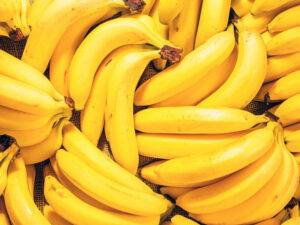

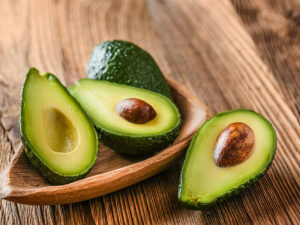
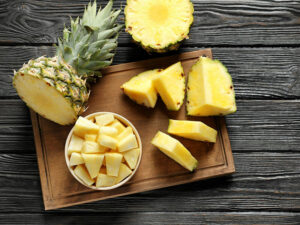
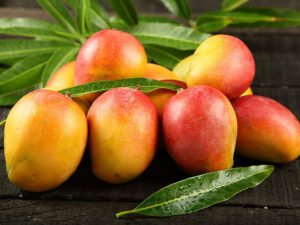
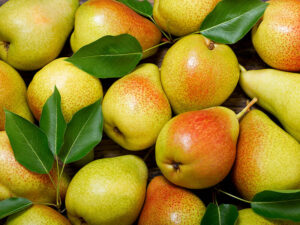
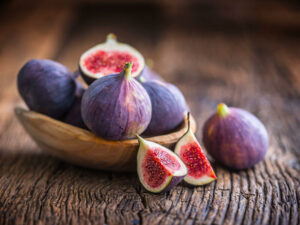
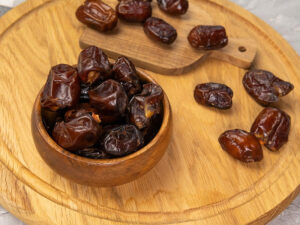
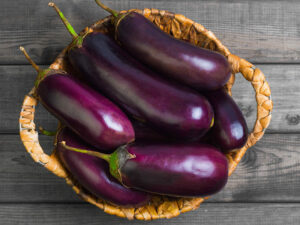
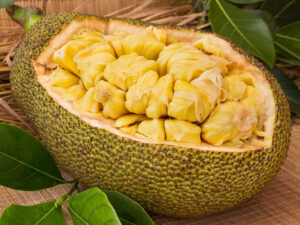
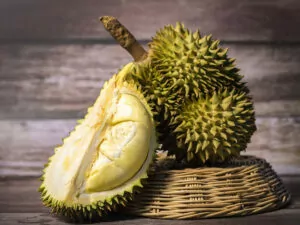
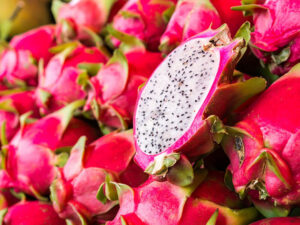
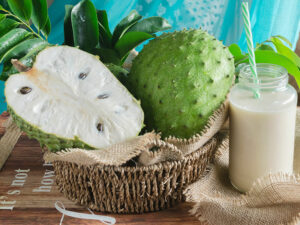
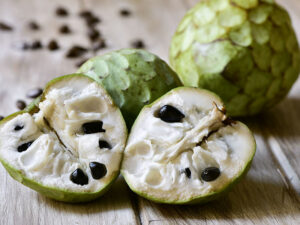
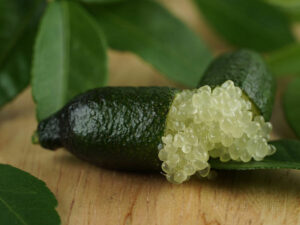
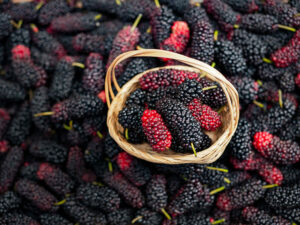
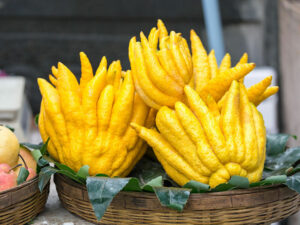
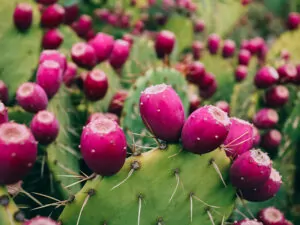
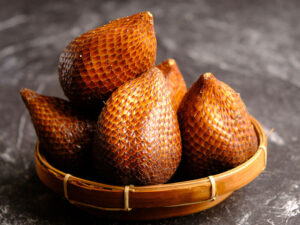
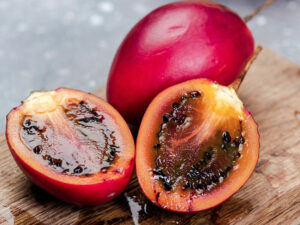
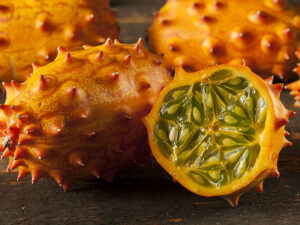
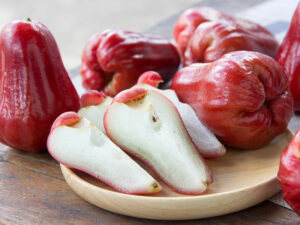
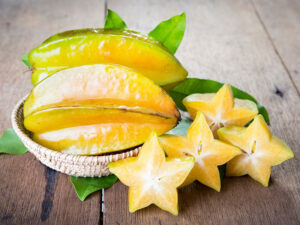
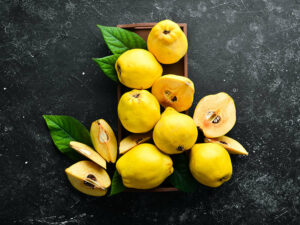
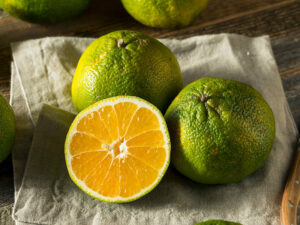

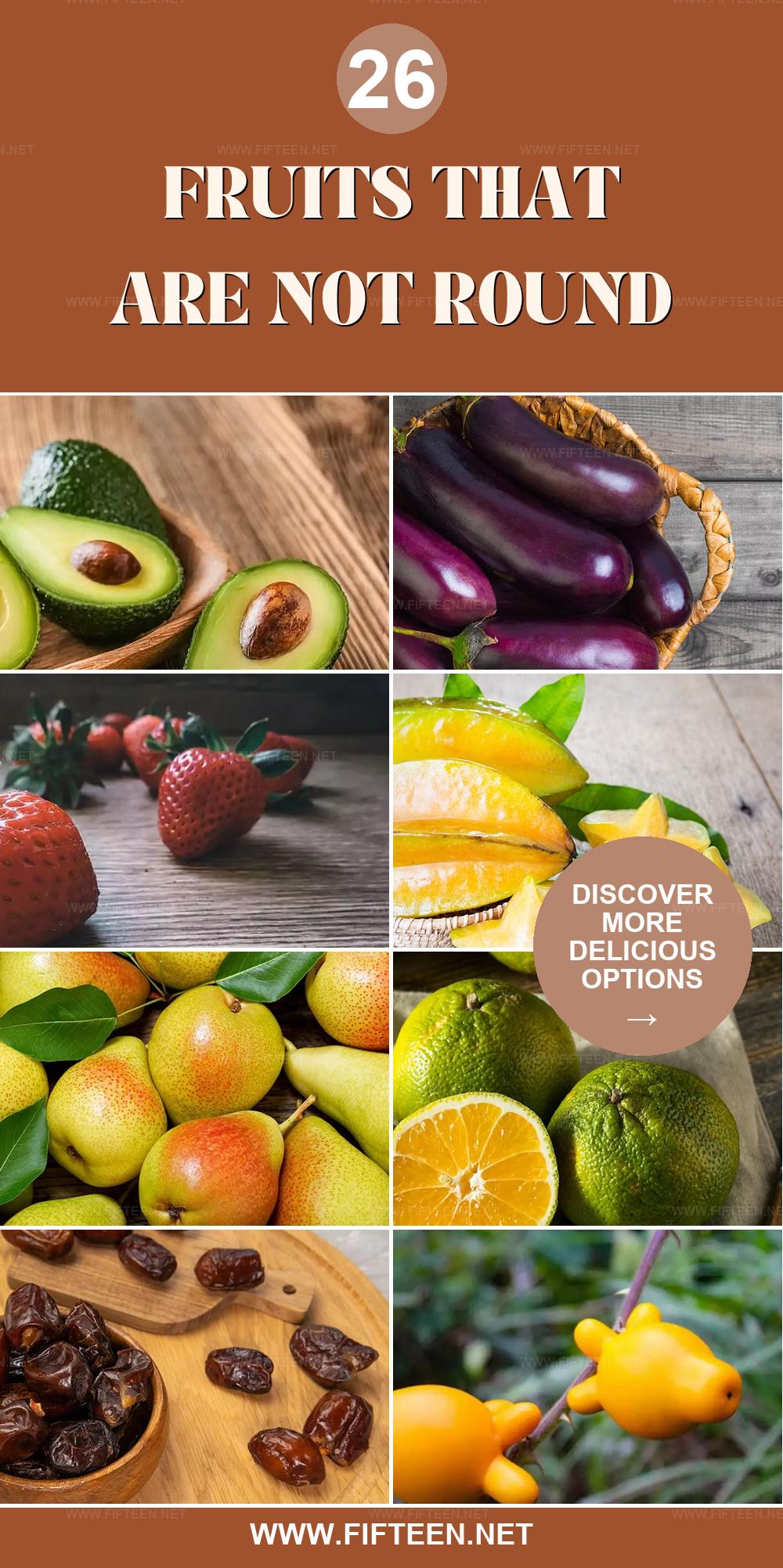
Jamie Scott
Editor in Chief, Senior Content Writer
Expertise
Home Cooking, Meal Planning, Recipe Development, Baking and Pastry, Food Editor, Cooking-video Maker, Western Food Evaluation Expert
Education
Le Cordon Bleu College of Culinary Arts
Local Community College, New York, NY
Jamie Scott is a skilled culinary expert and content creator specializing in Western cuisine. With over 15 years in the culinary field and formal training from Le Cordon Bleu, Paris, Jamie deeply understands how to blend nutrition with delicious flavors. His passion for cooking matches his commitment to making healthy eating accessible and enjoyable.
On Fifteen.net, Jamie brings a fresh perspective to classic dishes and beverages, offering readers insightful recipes, cooking tips, and a fresh view on meal planning that emphasizes taste, health, and simplicity.